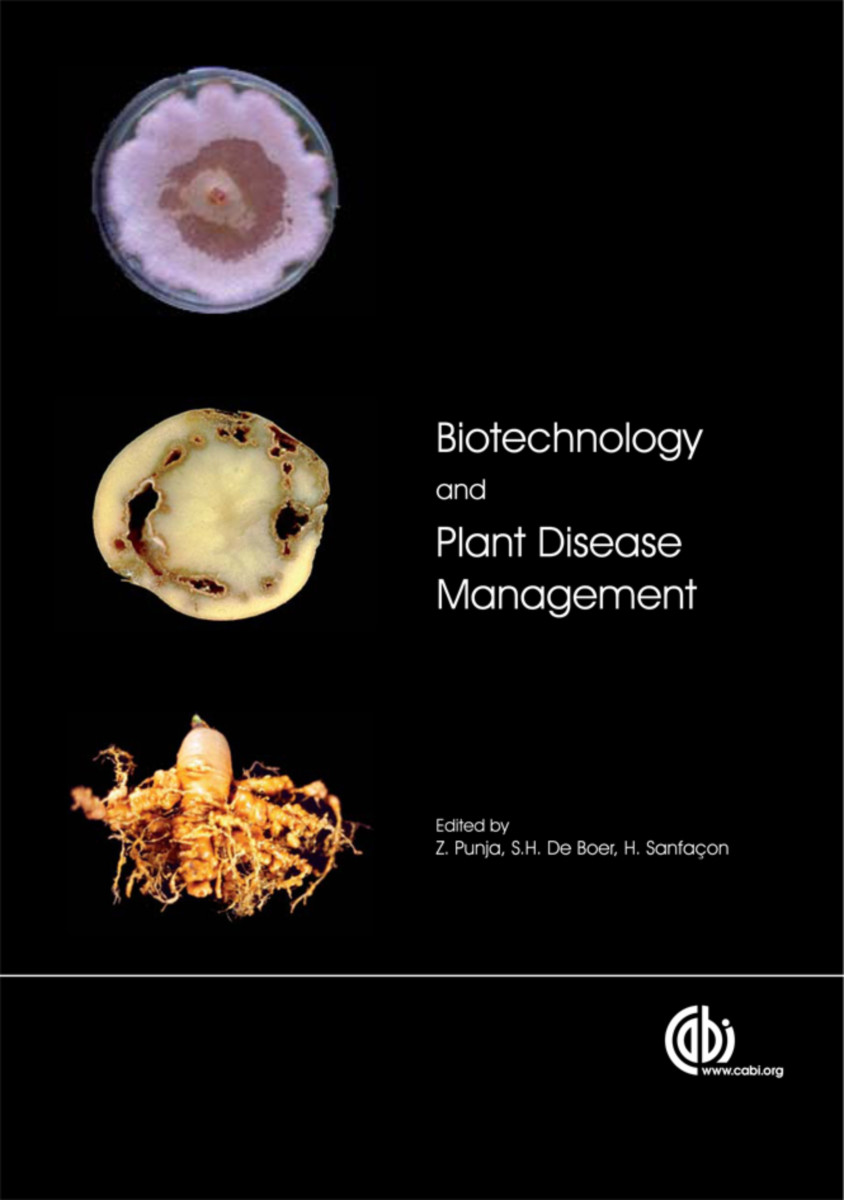Biotechnology and Plant Disease Management
- Publisher
CABI - Published
31st October 2007 - ISBN 9781845932886
- Language English
- Pages 580 pp.
- Size 6.875" x 9.75"
As agricultural production increases to meet the demands of a growing world population, so has the pace of biotechnology research to combat plant disease. Diseases can be caused by a variety of complex plant pathogens including fungi, bacteria, viruses and nematodes, and their management requires the use of techniques in transgenic technology, biochemistry and genetics. While texts exist on specific pathogens or management practices, a comprehensive review is needed of recent developments in modern techniques and the understanding of how pathogens cause disease. This collection of studies discusses the key approaches to managing each group of pathogens within the context of recent developments in biotechnology. Broad themes include microbe-plant interactions, molecular diagnostics of plant pathogens and enhancing the resistance of plants.
Section A: Unraveling microbe-plant interactions for applications to disease management
1) Signal transduction pathways and disease resistance genes and their applications to fungal disease control.
2) Modulating quorum sensing and Type III secretion systems in bacterial plant pathogens for disease management.
3) Application of biotechnology to understand pathogenesis in nematode plant pathogens.
4) Interactions between plant and virus proteomes in susceptible hosts
5) Mechanisms of plant virus evolution and identification of genetic bottlenecks
6) Molecular understanding of viroid replication cycles and identification of targets for disease management.
Section B: Molecular diagnostics of plant pathogens for disease management
7) Diagnostics of soilborne fungal pathogens.
8) Detection of plant pathogenic bacteria.
9) Diagnostics of plant-parasitic nematodes.
10) Molecular Diagnostic methods for plant viruses
11) Identification and diversity of phytoplasmas.
12) Detection of plant viroids.
Section C: Enhancing resistance of plants to pathogens for disease management
13) Application of cationic antimicrobial peptides for management of plant diseases.
14) Molecular breeding approaches for enhanced resistance against fungal pathogens.
15) Protein-mediated resistance to plant viruses.
16) Transgenic virus resistance using homology-dependent RNA silencing and the impact of mixed virus infections.
17) Molecular characterization of endogenous plant virus resistance genes.
18) Potential for recombination and creation of new viruses in transgenic plants expressing viral genes
19) Virus-resistant transgenic papaya
Section D: Understanding microbial interactions to enhance disease management
20) Potential disease control strategies revealed by genome sequencing and functional genetics of plant pathogenic bacteria.
21) Molecular assessment of soil microbial communities with potential for suppressing plant disease.
22) Enhancing biological control efficacy of yeasts to control fungal diseases through biotechnology.
23) Molecular insights into plant virus-vector interactions.


